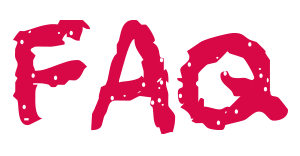
Is there any age limit for rhinoplasty?
As the nose is still growing up to around 17-18 years of age, I advise my patients to have rhinoplasty surgery after this age.
Is rhinoplasty a painful operation?
Rhinoplasty is not accepted, particularly as a painful surgery. Latest technology in medicine can easily avoid pain. In general patient, feedbacks are just having mild discomfort.
How long does a rhinoplasty operation take and what changes the surgery length?
The length of the rhinoplasty surgery changes by the complexity of the procedure or the efficiency and experience of the surgeon. Most rhinoplasty procedures take about 1-2 hours.
Are there any bruises at rhinoplasty operation?
In the majority of cases, most bruising fade away approximately in 6-7 days. Only a few patients who have very light skin color and thinner skin may get extensive bruising. These cases mostly heal around 2-4 weeks in total.
Is there any preparing need to before the rhinoplasty surgery?
Consultation with the patient and identifying the existing problems and the wishes are the keys to a successful surgery. The desired result should definitely be in conformity with the patient’s expectations so that the patient is satisfied with the new form of their nose.
How to decide which technique to use in rhinoplasty surgery?
Mostly we decide the method of surgery during the consultation with the patient. In the majority of my cases, I prefer the open method which is %70 of my nose job surgeries. %30 of the cases are closed rhinoplasty as it is a better option for those patients.
When do patients return to normal life after rhinoplasty surgery?
After rhinoplasty surgery, the cask should stay on the nose at least 6-7 days. After removing the cask I leave a transparent plaster 3-4 days more. In total 10 days later there will nothing on the nose.
Of course, when we remove the cask there might be some swelling left but anyway at the end of the first month we see %80 of the surgery result.
What’s the revision rhinoplasty surgery?
Revision rhinoplasty means a secondary-surgery for the correction of a patient who had a rhinoplasty before. In general %5-10 of the cases is revision rhinoplasty. The revisions mostly happen related to the unexpected behavior of the skin or cartilage.
Revision rhinoplasty is usually more complex than primary rhinoplasty, that is why it is more challenging and rewarding procedures in facial plastic surgery. Choosing an experienced surgeon for revision rhinoplasty can help you out.
What’s the nose collapses after rhinoplasty surgery?
In some cases, the tip of the patient’s nose may remain bent downwards after swellings related to the operation decline. Nasal collapse should not occur as long as the operation is performed properly and we see it very rarely. It is mostly seen in the old methods of closed rhinoplasty surgeries.
When do the patients start playing sports after rhinoplasty surgery?
Patients are not permitted to exercise for at least 3 weeks after the rhinoplasty. Contact sports should be avoided for at least 6-8 weeks after the rhinoplasty surgery. Using eyeglasses also should be avoided for 6-8 weeks. Afterward, the patient may go back to the normal routine.
What’s the golden ratio in rhinoplasty?
The human facial features are based on Phi and Golden Ratio proportions. There are many examples of Phi and Golden Ratio proportions on the human face they are also called as the Divine Proportion or Golden Section.
The nose and mouth are both placed at golden sections of the distance between the eyes and the bottom of the chin, but of course, these ratios are different in man and woman.
That is what we care about during the rhinoplasty and many other aesthetic surgeries.
What’s the cartilage transfer in rhinoplasty surgeries? Using in which situations?
The choice of method mostly depends on what the cartilage is needed for ear cartilage is more likely to warp than rib cartilage because it is thinner and softer than rib cartilage and if it is needed for nose tip, ear cartilage is much better. If it is needed to build up the nasal bridge, the rib graft will be the best choice but ear cartilage is also will be enough.
